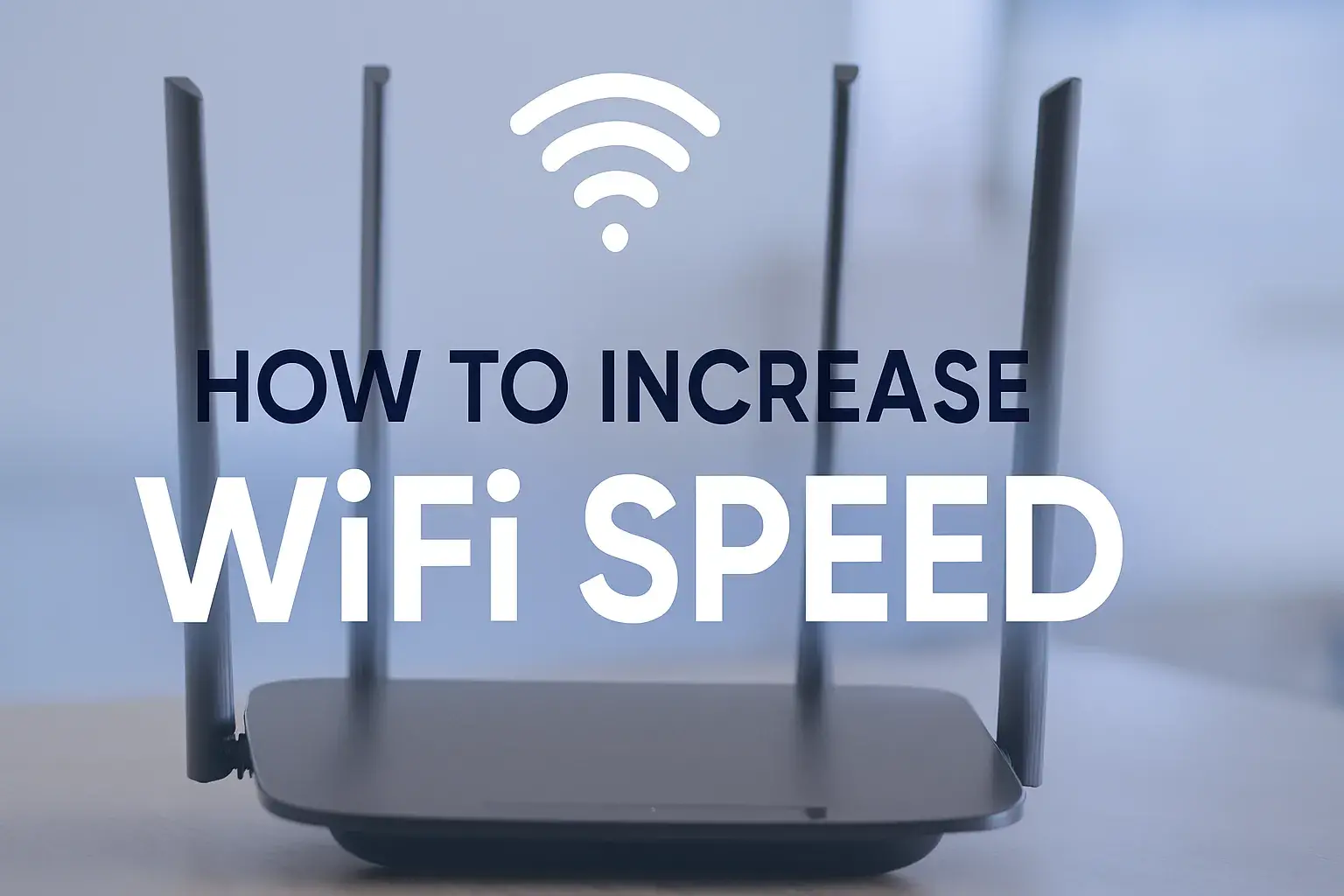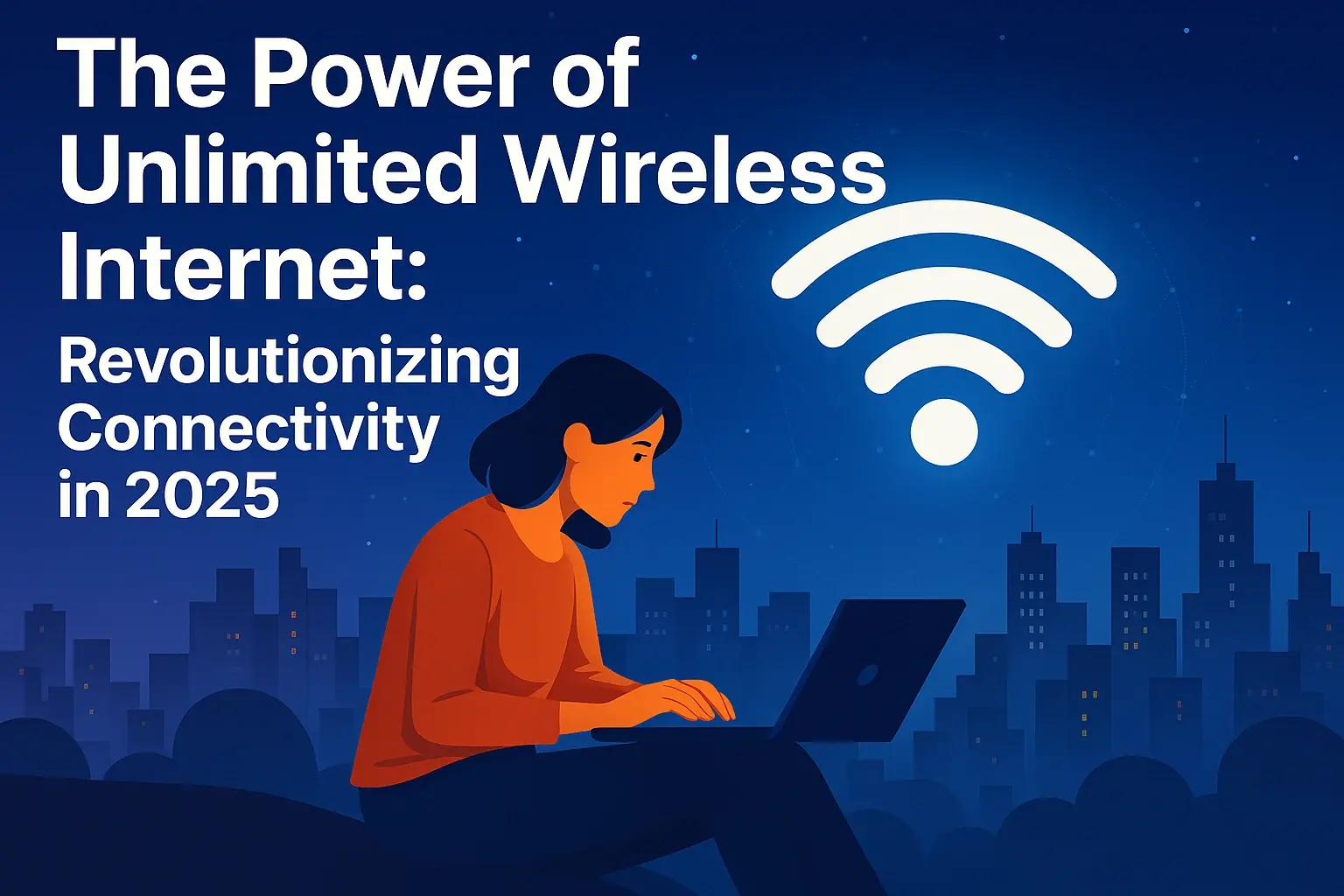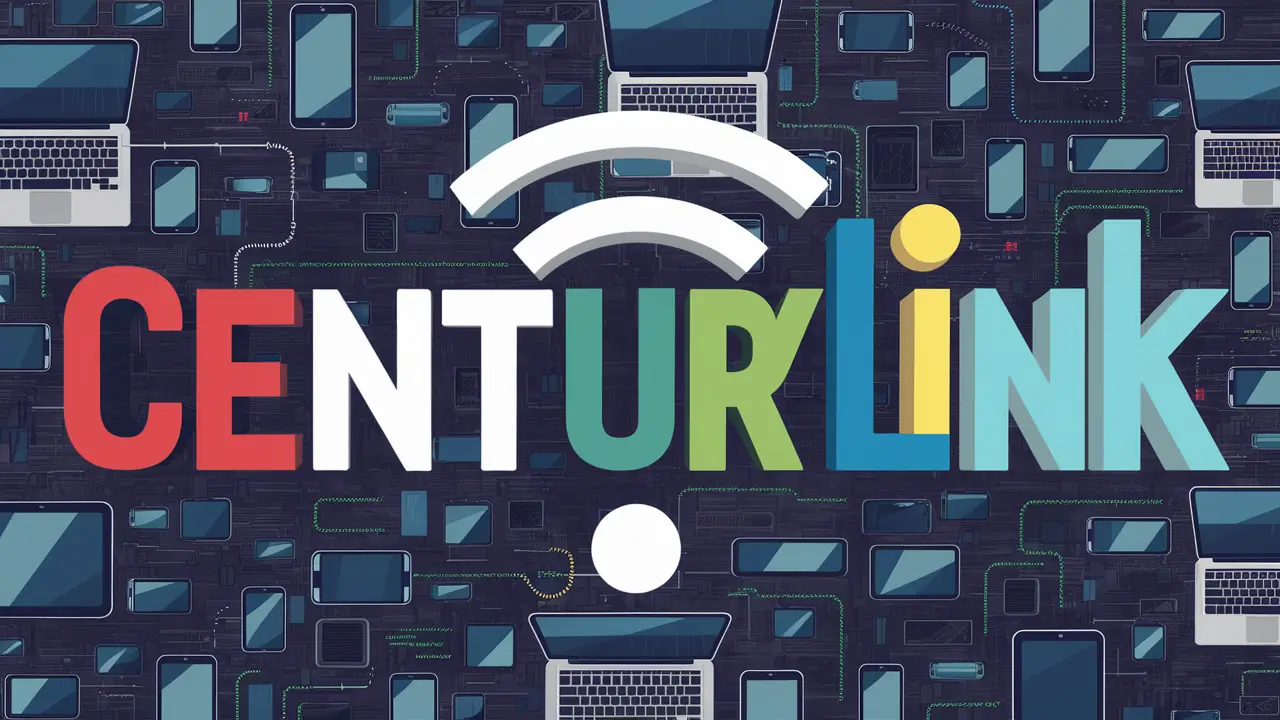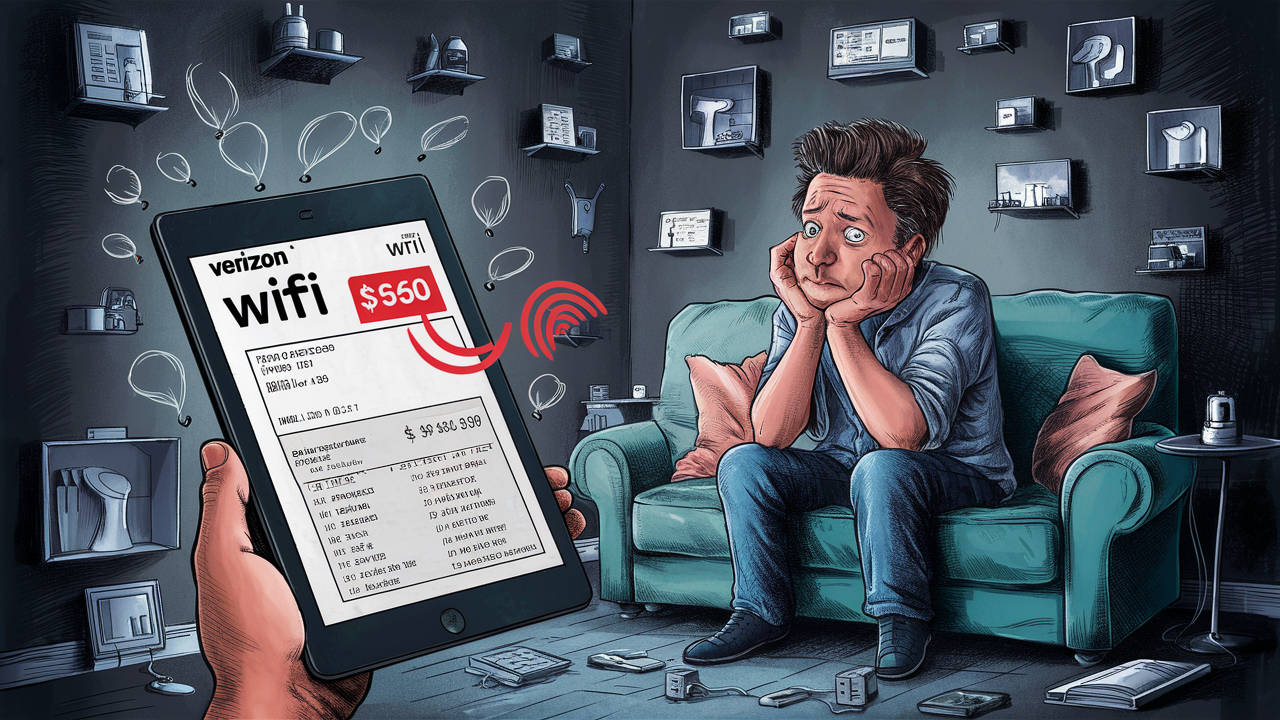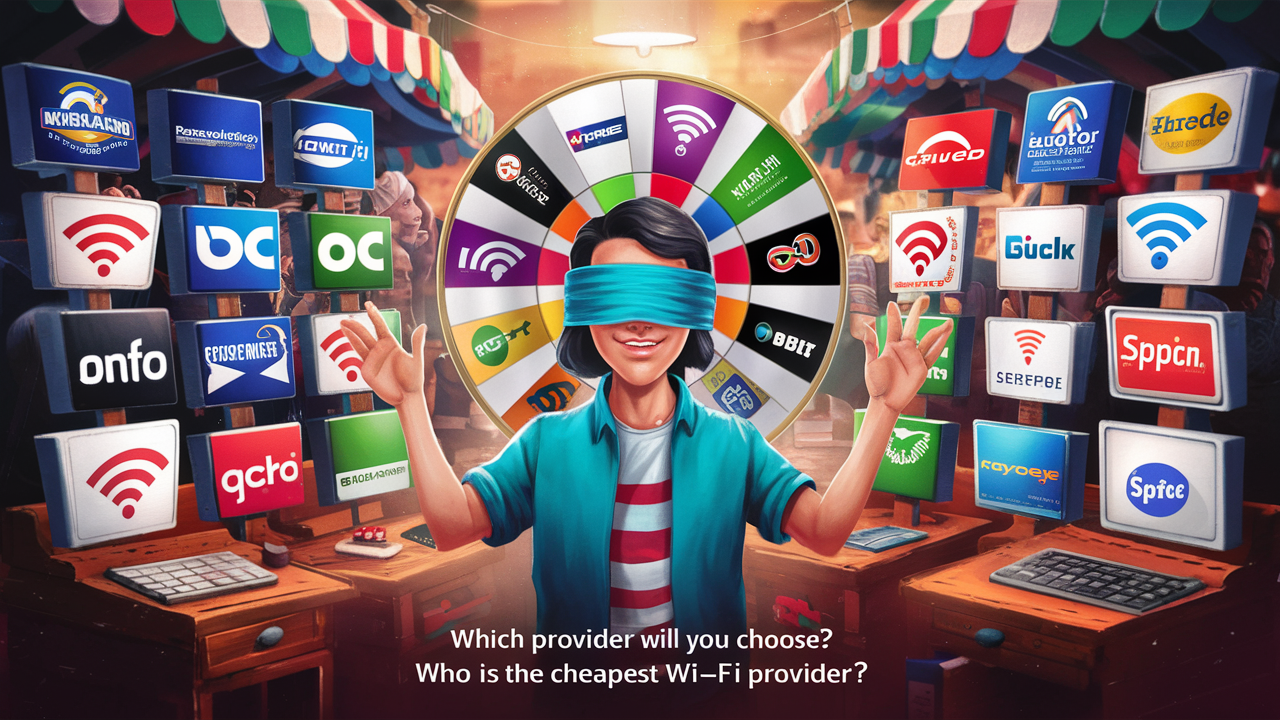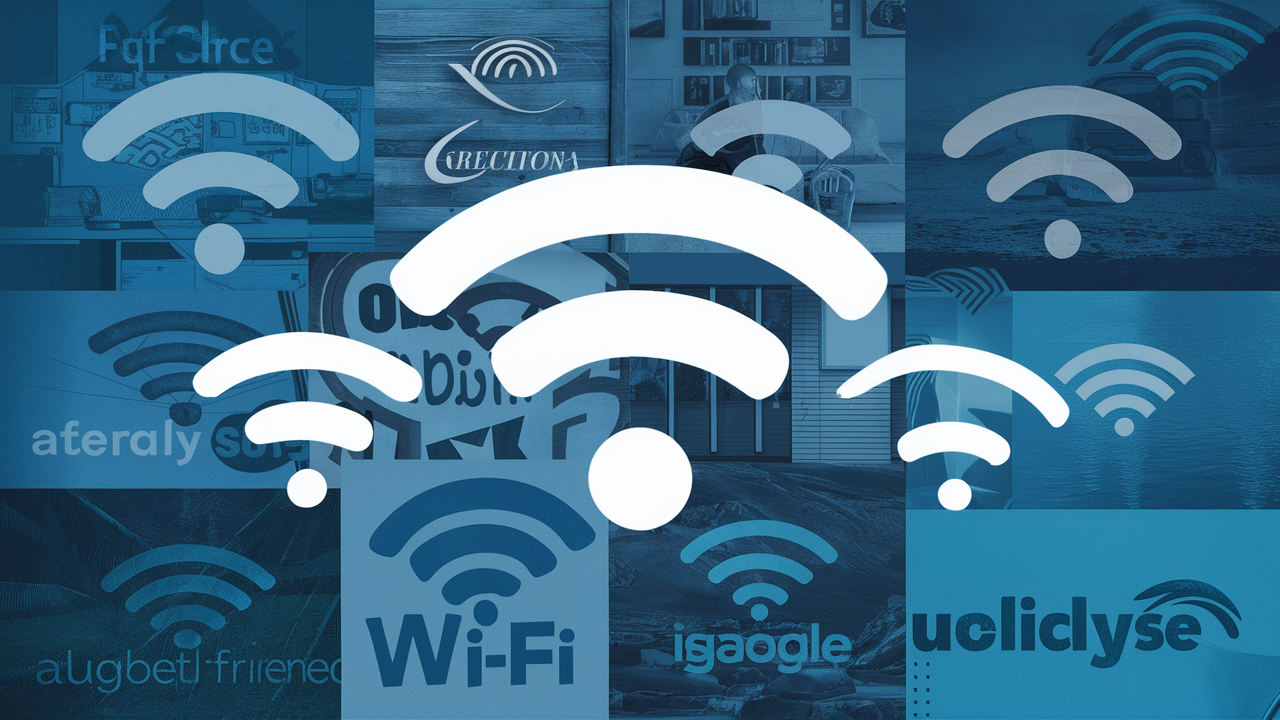How can I Get Free WiFi without Paying?

Discover legitimate and ethical ways to access free WiFi without hidden costs or security risks. This guide provides practical strategies for finding complimentary internet access in various public and private spaces, ensuring you stay connected affordably in 2025.
Introduction: The Quest for Free WiFi
In 2025, reliable internet access is no longer a luxury but a necessity. Many individuals seek ways to get free WiFi without paying, driven by budget constraints or the need for on-the-go connectivity. This comprehensive guide explores legitimate and secure methods to access complimentary internet, empowering you to stay connected without incurring unexpected costs or compromising your digital safety.
Leveraging Public Wi-Fi Hotspots
Public spaces are the most common and accessible sources of free WiFi. Understanding where to find these hotspots and how to connect safely can significantly reduce your reliance on paid internet services. These networks are often provided by businesses or municipalities to attract customers or serve the community.
Public Libraries: A Reliable Haven
Public libraries have long been pillars of community access to information, and this extends to internet connectivity. In 2025, virtually all public libraries offer free, high-speed WiFi. They are typically secure, well-maintained, and provide a quiet environment for work or study. The process of connecting is usually straightforward: find the library's network name (SSID), select it on your device, and agree to the terms of service. Some may require a library card number for access, ensuring a degree of accountability and security. Statistics from the American Library Association in late 2024 indicate that over 98% of public libraries in the United States offer free public WiFi, with many reporting increased usage for remote work and education.
Key advantages of library WiFi:
- High security standards compared to some other public options.
- Stable and often fast connection speeds.
- Quiet and conducive environment for productivity.
- Assistance from library staff if needed.
When using library WiFi, it's always advisable to use a VPN for an added layer of security, especially if you plan to access sensitive information.
Cafes and Restaurants: Sip and Surf
Many cafes, coffee shops, and restaurants offer free WiFi as a perk for their patrons. This is a popular option for those looking to work remotely, catch up on emails, or simply browse the web while enjoying a beverage or meal. The availability and speed can vary greatly. Some establishments offer robust connections capable of streaming, while others might have slower speeds or data caps. Typically, you'll need to make a purchase to get the WiFi password, or the network might be open and accessible to anyone within range. Look for signs indicating "Free WiFi" or ask a staff member. In 2025, popular chains like Starbucks, McDonald's, and Dunkin' continue to offer free WiFi in most of their locations. Independent cafes are also increasingly adopting this practice to attract and retain customers.
Tips for using cafe/restaurant WiFi:
- Make a small purchase to support the business.
- Be aware of potential time limits or bandwidth restrictions.
- Ensure you are connecting to the official network and not a spoofed one.
A quick search on your device's WiFi settings will usually reveal available networks. Connecting often involves agreeing to terms or entering a password provided at the counter.
Retail Stores and Shopping Centers
A growing number of retail stores and entire shopping malls provide free WiFi for shoppers. This amenity enhances the customer experience, allowing shoppers to compare prices, read reviews, or share their finds on social media. Major retailers like Target, Walmart, and many department stores often have their own branded WiFi networks. Shopping centers frequently offer a general WiFi network for all visitors. The connection quality can be inconsistent, as it's designed for casual browsing rather than intensive work. However, for basic online tasks, it can be perfectly adequate. In 2025, it's becoming standard for large retail outlets and malls to offer this service. Always look for the official network name and avoid connecting to generic or unsecured options.
Examples of retail locations offering free WiFi:
- Large chain bookstores (e.g., Barnes & Noble)
- Home improvement stores (e.g., Home Depot, Lowe's)
- Electronics retailers (e.g., Best Buy)
- Many supermarkets and grocery stores
Connecting is usually as simple as selecting the network and accepting terms. Some might require a brief sign-up process.
Transportation Hubs: Airports and Stations
Airports, train stations, and bus terminals are prime locations for free WiFi. While some airports offer limited free access (e.g., 30-60 minutes), many now provide unlimited free WiFi to all passengers and visitors. This is crucial for travelers who need to stay connected for flight updates, navigation, or entertainment during their journey. The speed and reliability can vary significantly depending on the hub's infrastructure and the number of users. Major international airports often have excellent WiFi coverage. Smaller regional hubs might have more basic offerings. In 2025, the expectation is that most significant transportation hubs will offer at least some form of free WiFi. Connecting usually involves selecting the airport's or station's network and agreeing to terms, sometimes with an option to watch an advertisement for extended access.
Key transportation hubs to check for free WiFi:
- Major international airports (e.g., JFK, LAX, LHR)
- Large city train stations (e.g., Grand Central Terminal, King's Cross)
- Intercity bus terminals
Be mindful that these networks can be crowded, potentially impacting speeds. Always verify the official network name.
Parks and Public Squares
Many cities are investing in public WiFi initiatives to make their parks, plazas, and downtown areas more accessible and attractive. These networks are often part of smart city projects aimed at improving citizen services. While the primary purpose is often connectivity for residents and tourists, they can be a valuable source of free internet. The coverage area might be limited to specific zones within the park or square. Speeds can be moderate, suitable for general browsing and social media. In 2025, more municipalities are rolling out these services. Look for signs indicating "Free Public WiFi" or search for networks named after the city or park. Some may require a quick registration. This is a great option for staying connected outdoors.
Examples of cities with public WiFi initiatives:
- New York City (LinkNYC kiosks provide free WiFi in many areas)
- London (Various public WiFi initiatives in parks and transport areas)
- Seoul (Extensive public WiFi network)
These networks are generally unsecured, making a VPN essential for any sensitive activity.
Community-Driven Free WiFi Solutions
Beyond typical public spaces, various community-focused initiatives and organizations are working to bridge the digital divide by providing free internet access. These efforts often target underserved populations but are usually open to anyone in need.
Municipal Wi-Fi Programs
Some cities and towns offer broader municipal WiFi programs that extend beyond just parks or libraries. These programs aim to provide internet access across entire neighborhoods or districts, often funded by local government or through public-private partnerships. The goal is to ensure all residents have access to online resources for education, employment, and civic engagement. The availability and quality of these programs vary widely by location. Some offer high-speed, reliable connections, while others might be more basic. In 2025, these programs are becoming more sophisticated, with some cities even offering subsidized internet plans alongside free public access points. Research your local government's website or city council initiatives to see if such programs exist in your area.
Benefits of municipal WiFi:
- Wider coverage area than isolated hotspots.
- Potential for more stable connections.
- Aims to serve the broader community's digital needs.
Connecting usually involves selecting the designated municipal network and agreeing to terms. Registration might be required to monitor usage and ensure fair access.
Non-profits and Charitable Organizations
Various non-profit organizations and charities are dedicated to providing digital access to those who cannot afford it. These can range from community centers offering computer labs with free internet to programs that distribute low-cost or free internet access devices. Some organizations partner with businesses or governments to set up WiFi hotspots in underserved areas. While these services are often targeted, they can be a lifeline for individuals needing to get online for essential tasks like job applications, accessing government services, or connecting with family. In 2025, the role of these organizations in ensuring digital equity is more critical than ever. Look for local community centers, digital inclusion initiatives, or organizations focused on poverty reduction in your area.
Where to look for non-profit WiFi:
- Local community centers
- Libraries (often partner with non-profits)
- Organizations focused on education or job training
- Churches and faith-based organizations
Access requirements can vary, so it's best to contact the organization directly for information.
Exploring WiFi Sharing Networks
WiFi sharing networks offer a different approach to accessing free internet. Instead of relying on public infrastructure, these platforms connect users who are willing to share their home internet with others in exchange for access to someone else's connection. This creates a decentralized network of WiFi access points.
Peer-to-Peer WiFi Sharing Platforms
Platforms like WeFi or early iterations of services like FON (though less prominent now) facilitated peer-to-peer WiFi sharing. The concept is that users install an app that allows their router to broadcast a separate, secure WiFi network for other users of the platform. In return, they can access WiFi networks shared by other members. In 2025, while dedicated peer-to-peer WiFi sharing apps are less common than they once were, the underlying principle is still relevant. Some community-focused apps or services might incorporate similar sharing models. The idea is to create a community where internet access is a shared resource. When using such services, it's crucial to understand how your data is being shared and secured.
How peer-to-peer WiFi sharing works:
- Download and install the sharing app.
- Configure your router to share a portion of your bandwidth (often a separate, secure SSID).
- Gain access to WiFi networks shared by other users.
This model relies on a critical mass of users to be effective. The security of these networks is paramount, and users must be diligent.
Understanding Terms and Conditions
Before participating in any WiFi sharing network, thoroughly read and understand the terms and conditions. This is crucial for several reasons:
- Data Usage: Understand how much of your bandwidth is being shared and what limitations apply to your own usage.
- Security: Clarify how the platform secures the shared network and protects your data. Are you sharing your primary network or a separate guest network?
- Privacy: Know what information the platform collects about your usage and how it's used.
- Legal Responsibility: Understand if you are liable for any activity conducted by others using your shared connection.
In 2025, with increasing concerns about data privacy and security, platforms that offer WiFi sharing must be transparent about their practices. Always prioritize platforms that offer robust security features and clear privacy policies. A VPN is highly recommended when using any shared network, including those from peer-to-peer platforms.
Maximizing Your Mobile Hotspot Capabilities
While not strictly "free" in the sense of public access, utilizing your existing mobile data plan to create a WiFi hotspot can be a cost-effective way to get internet access when other options are unavailable. This involves turning your smartphone into a portable WiFi router.
Carrier Promotions and Bundles
Many mobile carriers in 2025 offer generous data allowances or unlimited data plans that include hotspot functionality. Some plans even offer specific promotions or bundles that make using your phone as a hotspot more affordable or even included at no extra cost. It's worth investigating your current carrier's offerings or comparing plans from different providers. Look for plans that specifically mention "hotspot data" or "tethering" allowances. Some carriers might offer unlimited data for a limited time as a promotional offer, which can be a great way to get free WiFi for a period.
Key things to check with your carrier:
- Monthly data allowance for hotspot usage.
- Any speed limitations on hotspot data.
- Promotional offers for unlimited hotspot data.
- International roaming hotspot policies.
By understanding your plan, you can leverage your mobile data effectively.
Data-Saving Strategies
If your mobile plan has limited hotspot data, employing data-saving strategies is essential. This ensures you can stretch your allowance further, effectively giving you more "free" WiFi time.
Effective data-saving techniques:
- Download content offline: For streaming services (music, video) and navigation apps, download content when you have reliable WiFi.
- Adjust streaming quality: Lower the video or audio quality when streaming over your hotspot.
- Disable background app refresh: Prevent apps from using data in the background.
- Use data compression features: Some browsers and apps offer data compression modes.
- Limit large downloads and uploads: Postpone large file transfers until you have access to unlimited WiFi.
- Monitor data usage: Regularly check your data usage through your carrier's app or device settings.
By implementing these tips, you can maximize the utility of your mobile hotspot and avoid exceeding your data limits, making it a more sustainable "free" WiFi solution.
Essential Security Practices for Free WiFi
Accessing free WiFi, especially in public and unsecured networks, comes with inherent security risks. It is paramount to adopt robust security practices to protect your personal information and devices. In 2025, cyber threats are more sophisticated, making vigilance crucial.
The Importance of a VPN
A Virtual Private Network (VPN) is your most critical tool when using any free WiFi network. A VPN encrypts your internet traffic, creating a secure tunnel between your device and the VPN server. This encryption makes your data unreadable to anyone who might be trying to intercept it, such as hackers on the same public network. Even if the WiFi network itself is unsecured, your connection through the VPN remains private. A good VPN will mask your IP address, further enhancing your anonymity. For 2025, choosing a reputable VPN provider with a strict no-logs policy is essential. Many VPN services offer free trials or affordable monthly plans, making them an accessible security measure.
Key benefits of using a VPN on free WiFi:
- Encrypts your internet traffic.
- Masks your IP address and location.
- Protects against man-in-the-middle attacks.
- Secures your data from eavesdropping.
Always ensure your VPN is connected before you start browsing or accessing any accounts.
Avoiding Sensitive Transactions
Public WiFi networks are not suitable for conducting sensitive transactions. This includes online banking, making purchases with credit cards, accessing confidential work documents, or logging into accounts with highly sensitive personal information. The risk of data interception on unsecured networks is too high. If you absolutely must access sensitive information, ensure you are using a trusted VPN and are on a network you can verify as secure (like a library or your own mobile hotspot with a strong password).
Transactions to avoid on public WiFi:
- Online banking and financial management.
- Online shopping requiring credit card details.
- Accessing employer's sensitive internal systems.
- Logging into social media accounts where you have significant personal data stored.
- Entering passwords for any critical accounts.
Prioritize performing these activities on a secure, private network whenever possible.
Verifying Network Authenticity
Cybercriminals often set up fake WiFi hotspots with names similar to legitimate ones (e.g., "Starbucks_Free_WiFi" instead of "Starbucks WiFi"). These are known as "evil twins." Connecting to such a network can lead to your data being stolen. Always verify the official network name with an employee or look for official signage. If a network name seems suspicious or is unencrypted when others in the vicinity are secured (or vice versa), avoid connecting. Be wary of networks that require minimal or no authentication, as these are often the most vulnerable or malicious.
Steps to verify network authenticity:
- Ask staff for the correct network name and password.
- Look for official signage with WiFi details.
- Compare the network name to known legitimate names.
- Be cautious of networks that appear unexpectedly or offer unusually strong signals.
Trust your instincts; if something feels off about a WiFi network, it's best to err on the side of caution and find an alternative.
Ethical and Legal Aspects
While the desire for free WiFi is understandable, it's crucial to approach it ethically and legally. Most free WiFi services are offered with the expectation that users will adhere to terms of service and use the connection responsibly. Illegally accessing WiFi, such as by hacking into a private network or circumventing payment systems without authorization, is a criminal offense and can lead to severe penalties. In 2025, cybersecurity laws are robust, and unauthorized access is taken very seriously. Always use legitimate, publicly available free WiFi services or those explicitly shared by individuals or organizations. Respect bandwidth limits and avoid activities that could disrupt the service for others, such as excessive downloading or bandwidth-hogging applications. Ethical usage ensures these free services remain available to everyone.
Key ethical guidelines:
- Only connect to networks you are authorized to use.
- Respect terms of service and usage policies.
- Avoid activities that consume excessive bandwidth or disrupt the network.
- Do not attempt to bypass payment systems or security measures.
- Be mindful of the impact your usage has on other users.
Responsible usage is key to maintaining access to these valuable resources.
Conclusion: Staying Connected Responsibly
Accessing free WiFi in 2025 is achievable through a variety of legitimate and ethical avenues. From the reliable services offered by public libraries and cafes to community initiatives and smart use of mobile data, numerous options exist to keep you connected without incurring costs. Remember that public WiFi, while convenient, necessitates a strong focus on security. Always employ a VPN, avoid sensitive transactions on unsecured networks, and verify the authenticity of WiFi hotspots to protect yourself from cyber threats. By understanding and utilizing these strategies responsibly, you can effectively navigate the digital landscape, stay connected for work, study, or leisure, and do so without compromising your budget or your online safety. Embrace these methods to ensure you're always online, ethically and securely.
